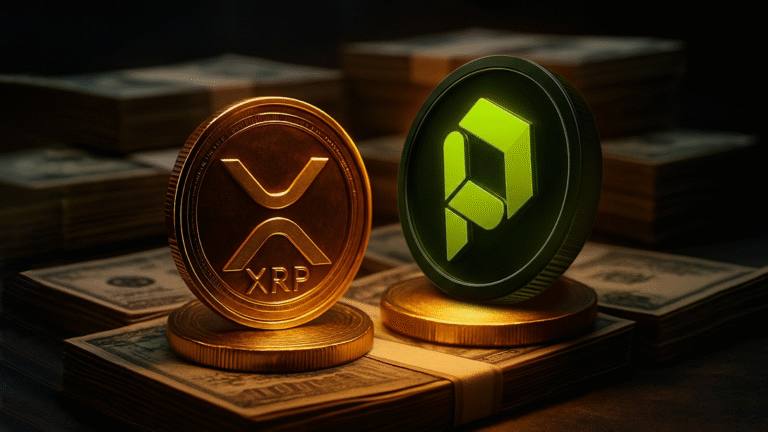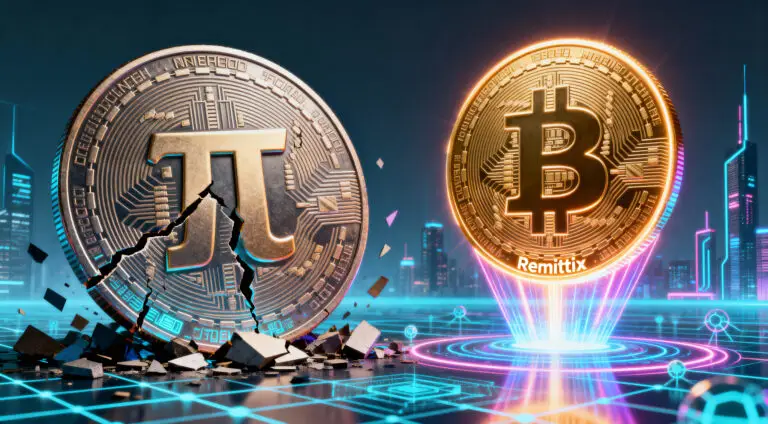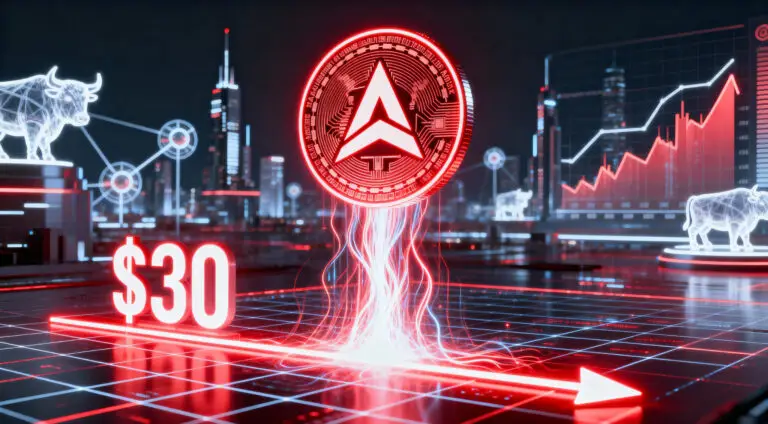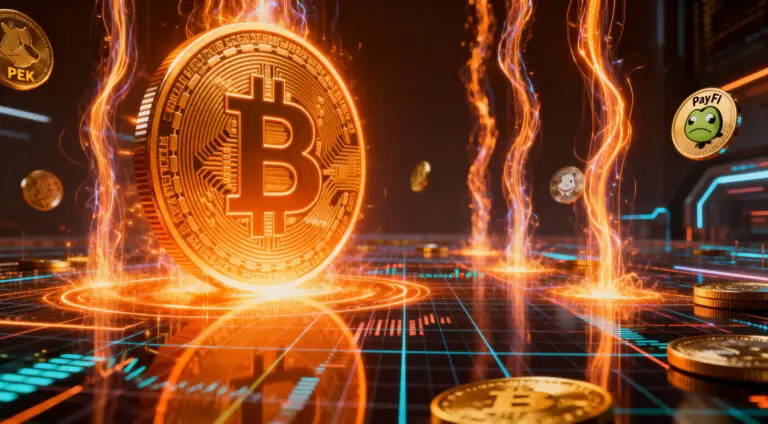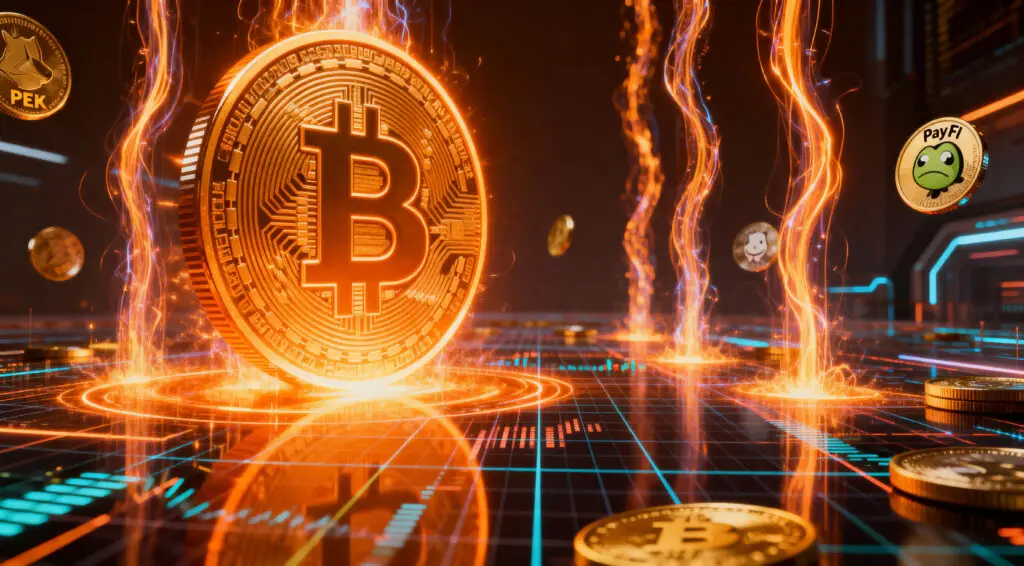Pi Coin’s Recent Price Decline and Market Reaction
The native token of the Pi Network, PI, has recently experienced a sharp decline, dropping from a high of nearly $0.46 on July 28 to just under $0.35 by August 2. This significant tumble brought PI’s 30-day decline to nearly 30%, causing further disillusionment among long-term token holders. The price plunge occurred shortly after the decentralised platform announced that “pioneers” (Pi Network users) had an option to lock up tokens, even as a substantial 132 million PI tokens are scheduled to unlock in August.
While some pro-Pi Network social media users attributed the price tumble to whale manipulation, a segment of the community believes that the core team’s decision to insist on locking up tokens is actively harming the project’s market performance and user confidence. This sharp downturn highlights the sensitivity of the market to both supply dynamics and community sentiment.
The Lockup Controversy Fueling Disappointment
The controversy surrounding token lockups has become a central point of contention for the Pi Network community. A user expressed strong disappointment, stating, “Why. No need for lockups. You give them 1k pi after 7 years. And now you are insisting on locking it for years again? Many people are losing their capital and belief in Pi.” This sentiment reflects a growing frustration among users who feel that the continuous emphasis on locking up tokens, even for those who have held for extended periods, is counterproductive.
According to an August 1 lockup reminder, Pi Network pioneers “can voluntarily choose to create lockups regardless of their migration status.” There are two types of lockups: pre-migration and post-migration. By creating a new lockup, token holders can supposedly boost individual mining rates, which is intended to support a robust and stable ecosystem and incentivize long-term engagement. However, the immediate market reaction, with the token tanking post-announcement, has sparked fresh allegations of impropriety against the core team, further fueling scepticism.
Allegations of Impropriety and Project Criticism
The recent price drop and the ongoing lockup controversy have led to renewed allegations of impropriety against the Pi Network core team. As previously reported, PI also experienced a plunge following a key announcement that failed to excite exasperated holders, indicating a pattern of negative market reactions to certain project updates. These repeated downturns have prompted some critics to label the project as the “biggest rug of 2025,” a serious accusation in the cryptocurrency space implying a deceptive scheme where developers abandon a project after raising funds, leaving investors with worthless tokens.
While these are strong claims, the consistent disappointment expressed by a segment of the community, coupled with the token’s poor price performance, underscores a significant challenge in maintaining trust and credibility. The core team faces increasing pressure to address these concerns directly and transparently to alleviate user anxieties and counter negative perceptions that are impacting the project’s reputation and market value.
Upcoming Token Unlocks and Supply Dynamics
Adding to the market pressure on Pi Coin are the significant volumes of upcoming token unlocks. A social media user, Dein, claimed that PI’s recent retreat was directly attributable to major investors dumping the project. Dein highlighted that “This month, Pi Network is set to unlock over 132 million Pi tokens, which are valued at over $70 million. This is the main reason major investors are exiting the project.” Token unlocks, by their nature, increase the circulating supply of a cryptocurrency, which can lead to increased selling pressure if not met by a proportional increase in demand.
The social media user also shared what they referred to as the lock-up schedule between now and the end of 2025. As indicated by this schedule, a staggering total of more than 600 million PI tokens are set to be unlocked from September through December. This continuous influx of new supply into the market presents a substantial challenge for Pi Coin’s price stability and its ability to recover from its current downturn.
The Impact of Increased Circulating Supply
The consistent unlocking of a large volume of Pi tokens into circulation directly impacts the token’s supply-demand dynamics. When a significant amount of new supply enters the market, it typically creates downward pressure on price, especially if there isn’t a corresponding surge in demand to absorb the additional tokens. The 132 million PI tokens set to unlock in August, followed by over 600 million more through December, represent a substantial increase in potential sellable supply. This scenario can lead to price depreciation as holders of newly unlocked tokens might choose to sell, either to realise profits or to exit positions due to concerns about the project’s direction.
The market’s ability to absorb this increased supply without further significant price drops will be a key indicator of underlying demand and investor confidence. Without robust utility or strong buying interest, the continuous unlocks could perpetuate the bearish sentiment and hinder any sustained price recovery for Pi Coin.
Community Sentiment and Investor Belief
The current situation within the Pi Network highlights a critical interplay between technical developments, tokenomics, and community sentiment. While the core team’s intentions behind token lockups may be to incentivize long-term engagement and support ecosystem stability, the market’s reaction suggests a disconnect with user expectations. The strong negative feedback from users regarding forced lockups and perceived capital loss indicates a potential erosion of belief in the project’s management.
In the decentralised space, community trust and investor belief are paramount, often influencing price action as much as, if not more than, fundamental utility in the early stages. The accusations of “rug pull” and “bad handlers” reflect a deep level of disappointment that the Pi Network must address to regain the confidence of its user base. Rebuilding this trust will be crucial for the project’s long-term viability and its ability to attract new participants.
Pi Network’s Future Hinges on Solving Utility and Token Issues
The future trajectory of the Pi Network and the recovery of Pi Coin’s price hinge critically on the core team’s ability to effectively address the underlying issues identified by the community and analysts. The ongoing token unlocks will continue to exert supply pressure, making it imperative for the project to stimulate genuine demand through tangible utility. This includes developing decentralised applications (dApps) that offer real-world use cases for Pi Coin, enabling seamless transactions for goods and services.
Furthermore, finding a viable solution to the problem of locked tokens in user wallets is essential to enhance liquidity and usability. Without clear and effective strategies to tackle these fundamental challenges, the Pi Network may continue to struggle with price volatility and declining user confidence. The path forward requires transparent communication, a renewed focus on practical utility, and a commitment to addressing community concerns to ensure the project’s long-term success and prevent further disillusionment among its pioneers.
Read More: Pi Network’s Price Crash and the Hope for a Rebound



